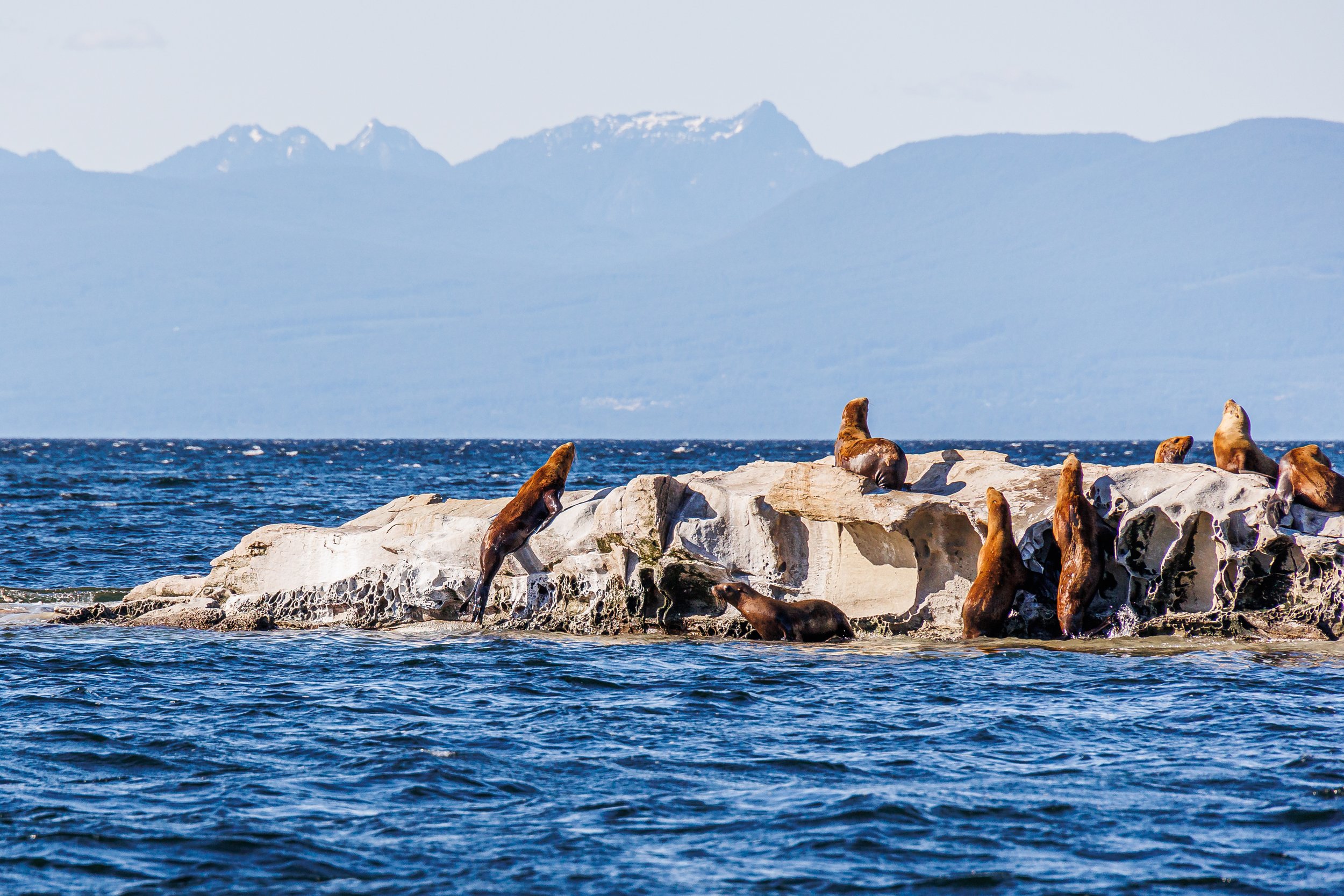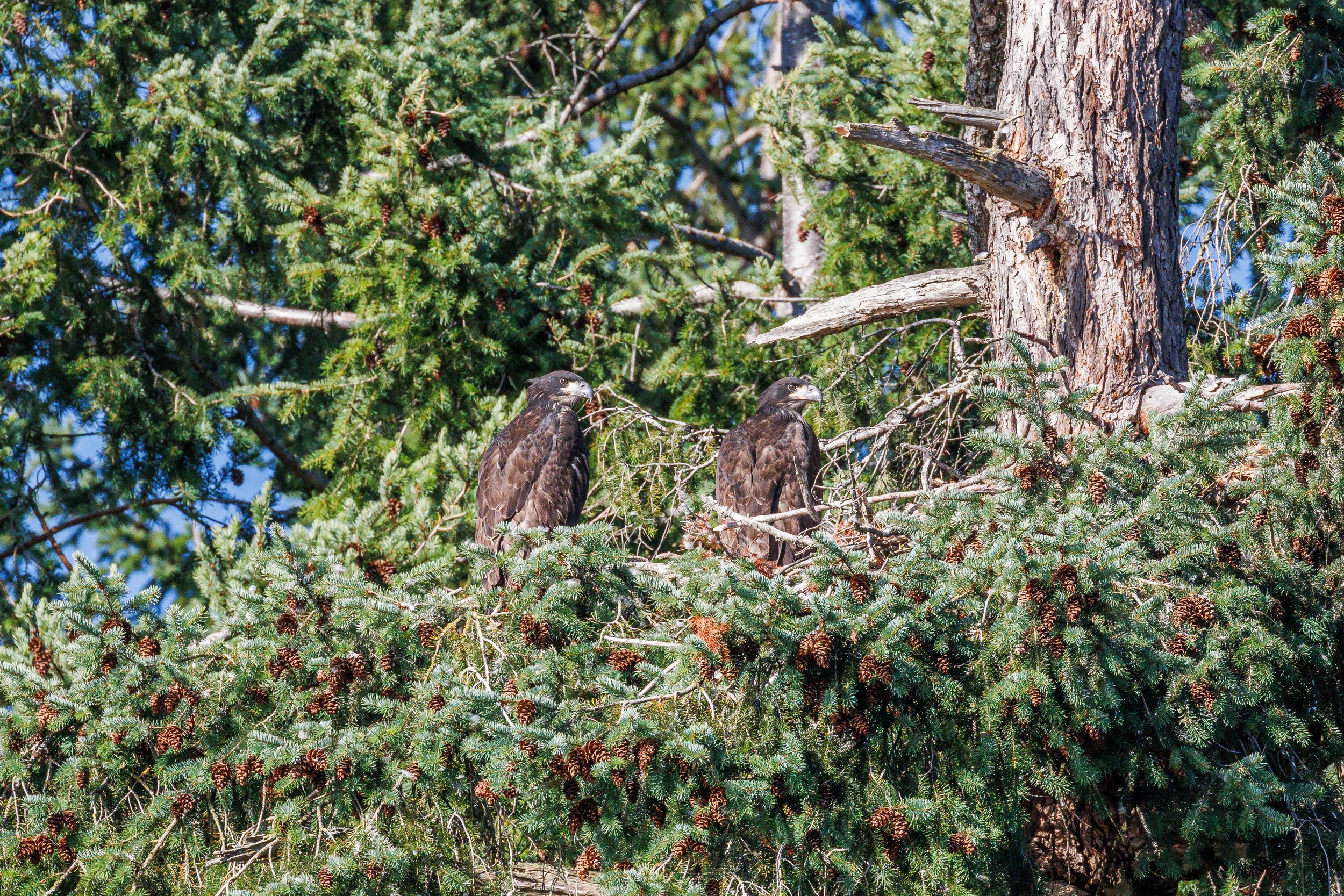July 2, 2023 - T099s in Trincomali Channel
We’ve been seeing a lot of the T099s for the last couple of weeks. This pod is a pretty interesting one, since it has a 2021 calf, a sprouting male, and some very distinct smaller dorsals. The breakdown of the pod is as follows:
T099 Bella ♀ (~1984)
T099B Holly ♀ (2007)
T099C Barakat ♂ (2009)
T099D Puck ♂ (2015)
T099E ♀ (2021)
These whales are absolute killing machines. Our boats left Nanaimo and headed south into the Southern Gulf Islands where the T099s were finishing up a hunt in Trincomali Channel. As is the way with the T099s, there wasn’t much of a celebration afterwards and instead carried on travelling.
The orca in the area are almost always on the move, travelling up to 100 miles in a single day. They might not do all this travelling in a single direction, but rather weave in and out of the islands, looking for food along the way. One of the main reasons for the whales to keep moving is something called auto-regulation. Since the Transient (Bigg’s) orca are hunting other mammals which are relatively intelligent, they have to be sneaky about it. If they stay in one area for too long not only do they decrease the amount of animals that are found there, but their prey also becomes aware of the fact that their main predators are hanging out and become more cautious. This causes the overall success of the Orca to plummet. To avoid this the orca constantly travel around and don’t stick to one area for too long.
The local population of orca can range anywhere between Southern Alaska all the way down to California, although some pods spend the vast majority of their time travelling throughout the Salish Sea. The T099s are a group that is primarily seen in the southern portions of Vancouver Island and around the Salish Sea in general.
After our time with the T099s was up, we headed out to see some other wildlife. We saw Seals, Sea Lions, Bald Eagles, and more along the journey back home.
The photos from today were captured by Naturalists Aly Kohlman and Vanessa Verschehen and can be enjoyed below.
A nervous Harbour seal swims past.
Photo by Vanessa Vereschahen
Matriarch T099 Bella♀(~1984)
Photo by Aly Kohlman
Big brother T099C Barakat♂(2009) with younger sister, unnamed T099E (2021).
Photo by Aly Kohlman
T099C Barakat♂(2009)
Photo by Aly Kohlman
T099C Barakat ♂ (2009)
Photo by Aly Kohlman
Look at the size of that dorsal! T099C Barakat♂(2009)
Photo by Aly Kohlman
T099D Puck ♂ (2015) is going through his sprouting phase, so that dorsal will change a lot in the next year or so!
Photo by Aly Kohlman
Brothers T099D Puck ♂ (2015) and T099C Barakat ♂ (2009)
Photo by Aly Kohlman
T099C Barakat♂(2009)
Photo by Aly Kohlman
Family photo! T099 Bella ♀(~1984), T099D Puck♂(2015), and youngster T099E ♀(2021) between them.
Photo by Aly Kohlman
T099B Holly ♀(2007) has a pretty distinct dorsal with a notch at the top, as seen here.
Photo by Aly Kohlman
T099C Barakat♂(2009)
Photo by Aly Kohlman
T099C Barakat (2009) and a playful family member! Photo by Vanessa Vereschahen
T99E ♀ (2021)
Photo by Aly Kohlman
T099E celebrates with a little fluke action!
Photo by Aly Kohlman
A group of Stellar Sea Lions head up on the rocks for a better look around.
Photo by Vanessa Vereschahen
A group of Cormorants perch on a ledge at the Gabriola Bluffs.
Photo by Vanessa Vereschahen
Photo by Aly Kohlman
A Peregrine Falcon stretches its wings at their nest at the Gabriola Bluffs.
Photo by Vanessa Vereschahen
Photo by Vanessa Vereschahen
Photo by Vanessa Vereschahen
Our two young Eaglets looking ready to leave the nest any day now!
Photo by Aly Kohlman
Bald Eagle Momma checks us out.
Photo by Aly Kohlman
Our local River Otter lounges on the dock outside the office.
Photo by Aly Kohlman
























